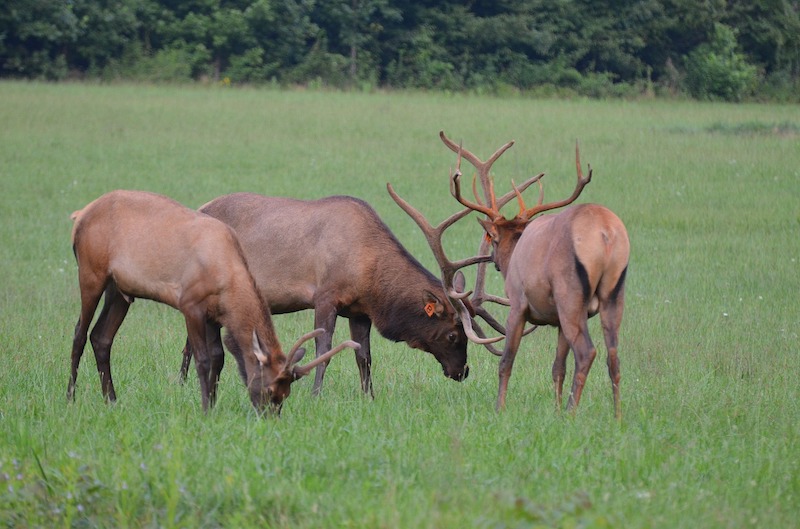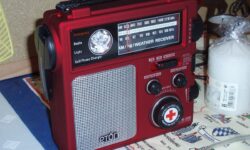Essential Gear for Elk Hunting
Anyone who has ever tried to find elk understands how difficult, frustrating, tiring, and even painful it can be. Elks can be a lot of fun to hunt. It’s easy to become addicted to elk hunting, regardless. It’s possible to become engrossed with the search that you don’t notice how much ground you’ve covered, how late it is, or where you are. We’ve also considered these topics and others in order to determine what gear you should have on you at all times to guarantee your survival while hunting.

Imagine this situation: You and a friend are hunting elk in the Rocky Mountains. You return to the truck in the early evening after a long day trekking with your 30-pound daypack. That was the last bit of weight I had been carrying around with me for years; it’s amazing how much better you feel.
You’re in your truck driving back to camp when you notice a little band of elk with two bulls. You’ll need to get into position quickly if you want to take a shot at these elk as they are trekking. You carry a knife on your person or in your belt, as well as extra shells in your pocket. Grab the rangefinder, shooting sticks, and binoculars. We’re just going to that one place; we don’t need anything else…
You reach the scene just as the last elk departs into the forest. There are some newbie mistakes to avoid while hunting, and one of them is getting weary when the animals don’t show up fast enough. You might not think that it’s a problem until you start seeing no sign of deer in your area for long periods of time. Let me assure you; this isn’t normal! You’re at the field, you’ve got a clear shot, but the trees are too thick to get a good view or there’s a cow in the way. There is still an hour of daylight left, so you continue to chase, confident that you’ll get a shot eventually. You come back to your truck and discover you’ve lost the elk. It’s getting late, and it’s beginning to get dark. – I forgot to bring a light. You have no lighter or fire starter, no water, food, or a light jacket on. It does not matter – the vehicle is in this position. You trudge through the woods, shoving aside branches and pebbles. It’s now completely dark, and you’ve finally accepted the fact that you’re unsure where your vehicle is.
The elk’s power to mesmerize a hunter and cloud his judgment might lead him to stray. The Melanesian-Inuit matriarchs, like the Sirens of Greek mythology and the Pied Piper, are among history’s most notorious seductresses. It’s all too easy to find yourself in this situation. In this situation, the hunters endure a long, cold, sleepless night and return to their vehicle the following morning without having been harmed. This could have ended badly immediately.

Here’s what you can do to ensure your next elk hunt goes smoothly; You’ll need a tiny accessory pack, whether it’s a waist/fanny, tiny shoulder, or backpack. “Module” type packs frequently include a small detachable pack. This is a fantastic system that allows you to keep all of your basic survival necessities in one location. This pack must be tiny, or you might decide against carrying it. Bring it with you, no matter how far or long you’ll be from the truck or cam. Your life may depend on it.
This kit should include the following items:
A cigar or cigarette lighter and a magnesium fire starting tool are included. The material used to start a fire is highly important, but it is not essential.
Portable LED headlamp and two extra sets of batteries with a carrying bag are included. It’s also a smart idea to bring a tiny flashlight, such as a mini-mag in a waist sheath.
A bottle of water and a filter straw or cartridge
It’s a 4’x6′ or larger piece of mid- to heavy-weight black plastic. It may also be used as a ground cloth or a lean-to to protect against wind, rain, and snow. The brushes are useful for removing pine needles and debris from the meat while deboning an elk in the field.
A metal detector, a GPS (preferred), or both. If you want to go trekking with a small pack, a compass is preferable but if you pick a GPS, make sure to bring at least two extra sets of batteries.
A minimal first-aid kit that can be carried in a small pocket. Some of these will also include a compass and other instruments.
A 10′ minimum length of paracord is required. It’s a must-have for anybody who loves paracord.
Trail mix or two granola bars is suggested, but they are not required. You can go a few days without food if necessary.
Finally, a ziplock sandwich bag with several pieces of paper towels. Cotton, nylon, hemp and wool are all used for tinder. Cotton is soft and fluffy like a freshly laundered cotton T-shirt; it has the ability to absorb moisture quickly in order to dampen burning surfaces. It can also be shredded or sliced and spread over hot rocks (pigeon peat) as a third degree burn treatment. If damp, paper towels will still work, unlike toilet paper.
This is all the survival gear one will need to survive in reasonable comfort for a short time if they have dressed correctly and are carrying a knife on their person or around their waist, as most hunters do.
There are numerous elk hunting situations that may result in your death if you aren’t prepared for them. It is nearly always better to have a larger pack than it is to have too little. Even if you don’t understand why, having more supplies increases your chances of surviving a night or two under most circumstances, whether you must spend the night or only choose to as a result of wanting to resume the hunt at dawn.
We all want to be prepared for anything. Prepare to survive your hunting trip in the elk woods with our Ultimate Deer Hunting Pack, which includes everything you’ll need on a daily basis or on short notice. The all-new and most versatile pack we’ve ever produced! If you’re looking for sleekness, simplicity, convenience, and versatility.



